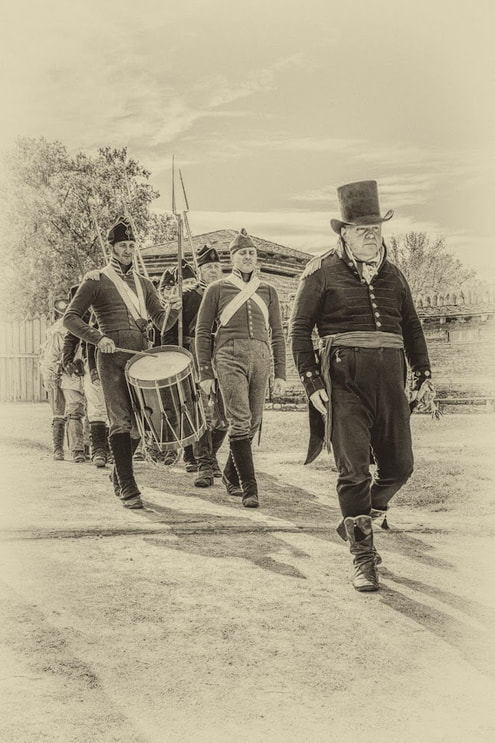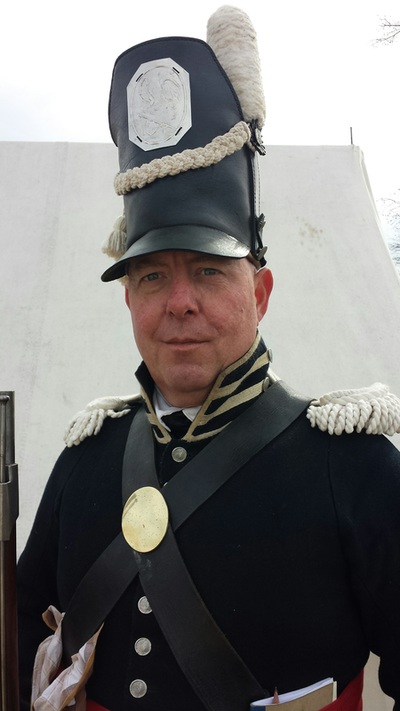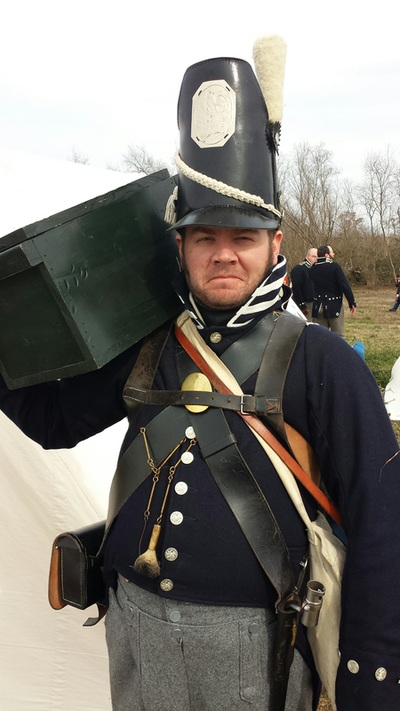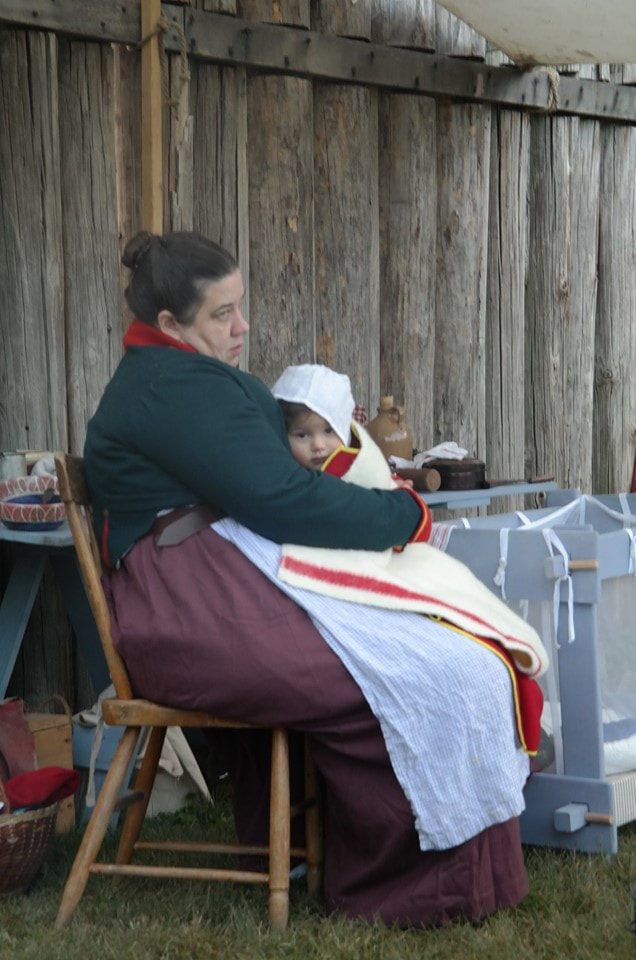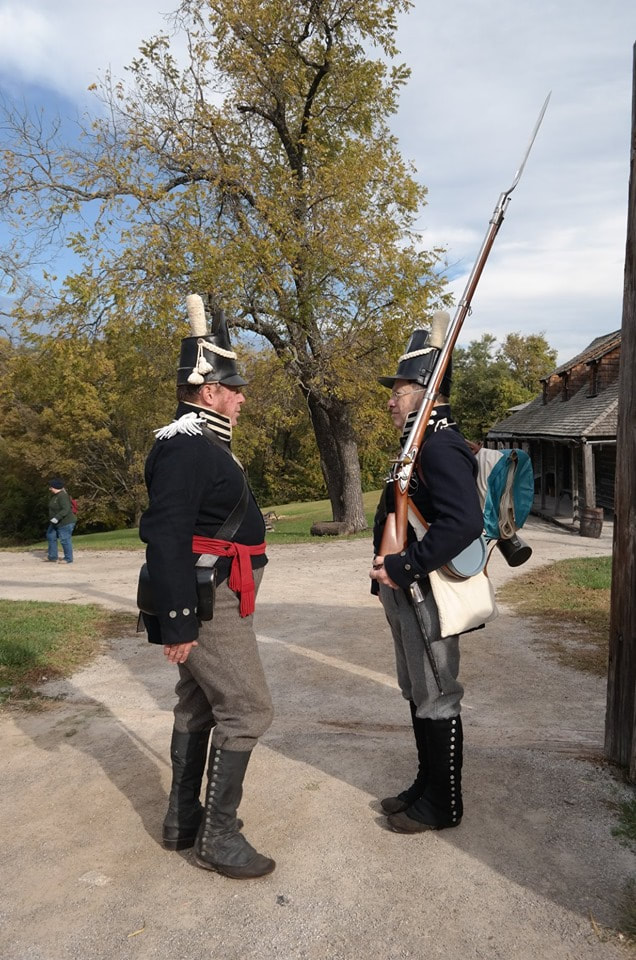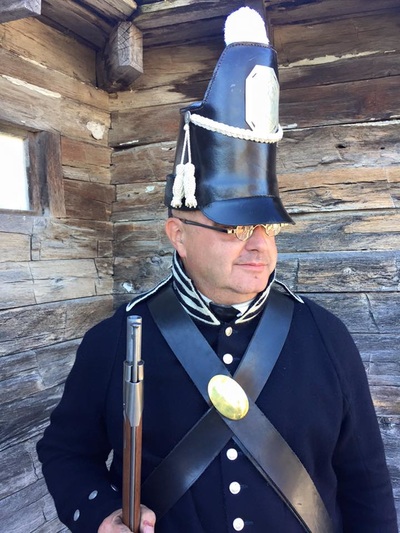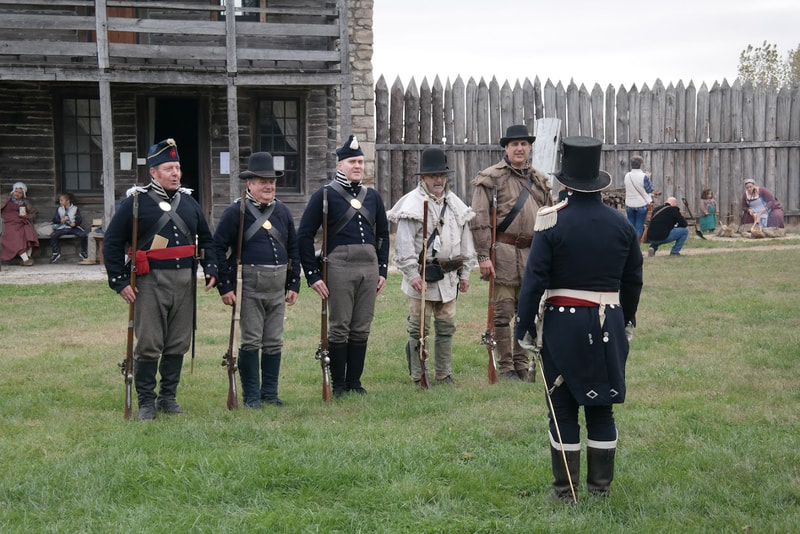Welcome to the 1st U. States Infantry Regiment - Clemson's Company

Welcome to Captain Eli B. Clemson - John C. Symmes Company, 1808 - 1815
In 1807, Captain Eli Brady Clemson set off to recruit his own company of the 1st United States Infantry Regiment. Most of the men he recruited hailed from Pennsylvania and New York, though his company included men from France, Ireland, and Prussia as well. Their first Muster was at Pittsburgh before ordered to Fort Belle Fontaine, Missouri Territory. By August 1808, Clemson's company were ordered to build one of two new "Factory Forts". His would be built on the Missouri River while the other would be built above St. Louis on the Mississippi River. The new fort was duly christened as Fort Osage in November 1808 by Captain Clemson as "a mark of respect to the Indian Nation for whom it was built". Remarkable that a US regular Infantry fort to be named for an Indian Nation. The Fort Osage Garrison would receive word of the "War of 1812" near the end of July 1812. Clemson would be promoted to Major in 1812 in the 1st Infantry and serve as the Inspector General for General Benjamin Howard of the US forces west of the Mississippi in 1813. Clemson would eventually be promoted to Lt. Colonel of the 16th US. Before his last promotion, however, he was able to influence Secretary of War John Armstrong, to order the three companies of the 1st Infantry stationed in the Illinois and Missouri territories, to the "Canada Line."
Captain John C. Symmes took command of the old Fort Osage company in 1813 while the 1st Infantry battalion to which it belonged was commanded by Lt. Col. Robert Carter Nicholas. The Fort Osage garrison company, the Fort Madison garrison company and the Fort Belle Fontaine and Fort Clark (Illinois) garrison company, were combined into one battalion of about 220 men, and left St. Louis is April of 1814. They were at Pittsburgh by July 4th 1814 and arrived July 25th during the bloodiest battle of the War, the Battle of Lundy's Lane, Upper Canada.
The recreated 1st Infantry - Clemson's company strives to represent Clemson's - Symmes' company and to bring history alive. The 1st Infantry U. States infantry included men such as John Armstrong, Captain Meriwether Lewis, Captain Zebulon Pike, Sgt. George Davenport, (the founder of Davenport Iowa), Captain Nathan Heald, and Ensign George Ronan, the first West Point graduate to be killed in action (at the Massacre of Fort Dearborn,1812). Clemson's - Symmes Company included such men as Captain John Cleeves Symmes, the originator of the Concentric Sphere Theory (Journey to the Center of the Earth), Patrick Gass, and Joseph Whitehouse both of the late Lewis and Clark Expedition, and Louis Lorimer, the first Native American to graduate from West Point, Both Lt. Brownson and Patrick Gass were authors. We are proud of our heritage and pledge to honor their memory as best we can. They were sons, fathers, and brothers, yet they were soldiers who pledged their life blood to their country. We welcome you to the 1st U. States Infantry web page.
The entire site is under copyright. Please give credit for anything reprinted or copied. .
In 1807, Captain Eli Brady Clemson set off to recruit his own company of the 1st United States Infantry Regiment. Most of the men he recruited hailed from Pennsylvania and New York, though his company included men from France, Ireland, and Prussia as well. Their first Muster was at Pittsburgh before ordered to Fort Belle Fontaine, Missouri Territory. By August 1808, Clemson's company were ordered to build one of two new "Factory Forts". His would be built on the Missouri River while the other would be built above St. Louis on the Mississippi River. The new fort was duly christened as Fort Osage in November 1808 by Captain Clemson as "a mark of respect to the Indian Nation for whom it was built". Remarkable that a US regular Infantry fort to be named for an Indian Nation. The Fort Osage Garrison would receive word of the "War of 1812" near the end of July 1812. Clemson would be promoted to Major in 1812 in the 1st Infantry and serve as the Inspector General for General Benjamin Howard of the US forces west of the Mississippi in 1813. Clemson would eventually be promoted to Lt. Colonel of the 16th US. Before his last promotion, however, he was able to influence Secretary of War John Armstrong, to order the three companies of the 1st Infantry stationed in the Illinois and Missouri territories, to the "Canada Line."
Captain John C. Symmes took command of the old Fort Osage company in 1813 while the 1st Infantry battalion to which it belonged was commanded by Lt. Col. Robert Carter Nicholas. The Fort Osage garrison company, the Fort Madison garrison company and the Fort Belle Fontaine and Fort Clark (Illinois) garrison company, were combined into one battalion of about 220 men, and left St. Louis is April of 1814. They were at Pittsburgh by July 4th 1814 and arrived July 25th during the bloodiest battle of the War, the Battle of Lundy's Lane, Upper Canada.
The recreated 1st Infantry - Clemson's company strives to represent Clemson's - Symmes' company and to bring history alive. The 1st Infantry U. States infantry included men such as John Armstrong, Captain Meriwether Lewis, Captain Zebulon Pike, Sgt. George Davenport, (the founder of Davenport Iowa), Captain Nathan Heald, and Ensign George Ronan, the first West Point graduate to be killed in action (at the Massacre of Fort Dearborn,1812). Clemson's - Symmes Company included such men as Captain John Cleeves Symmes, the originator of the Concentric Sphere Theory (Journey to the Center of the Earth), Patrick Gass, and Joseph Whitehouse both of the late Lewis and Clark Expedition, and Louis Lorimer, the first Native American to graduate from West Point, Both Lt. Brownson and Patrick Gass were authors. We are proud of our heritage and pledge to honor their memory as best we can. They were sons, fathers, and brothers, yet they were soldiers who pledged their life blood to their country. We welcome you to the 1st U. States Infantry web page.
The entire site is under copyright. Please give credit for anything reprinted or copied. .
"Belle Fontaine Aug 26 1807 Gowan, Agnew, Sprouls ...to complete the Knapsacks of the Company."
"Belle Fontaine 31st of Aug 1807 The soldiers whiskers must be shaved even with the Lower part of the ear."
•“The Troops will be Drilled at the different Forts & Camps and Cantonments within the Limits of General Howards Command agreeable to the Regulations of the War Department, ‘Duane’s Hand book for Infantry” being adopted will be practiced two hours in the Morning commencing with or before Sunrise and alike period to end at Sun setting is desired most preferable and least injurious to the health of the Troops." Major Eli B. Clemson.
“I should certainly give Duane’s Military Library and De Steuben’s Exercise the preference, Duane’s work might be made to suit that kind of Military force which republics are obliged to resort to... the 1812 Symth's regulations are “too confused” and “too copious” to be “brought to Practice with the Militia.” Lt. Colonel Daniel Bissell.
3-6-2024
11-19-2023
3-27-2023
11-3-2022
8-24-2022
4-1-2022
2-3-2022
12-7-2021
1-26-2021 all pages updated
9-18-2020 all pages updated
3-26-2020 all pages updated
1-4-2020 all pages updated
11-19-2023
3-27-2023
11-3-2022
8-24-2022
4-1-2022
2-3-2022
12-7-2021
1-26-2021 all pages updated
9-18-2020 all pages updated
3-26-2020 all pages updated
1-4-2020 all pages updated
